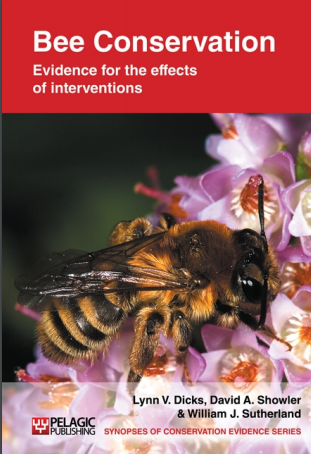Plant parks and gardens with appropriate flowers
-
Overall effectiveness category Awaiting assessment
-
Number of studies: 7
View assessment score
Hide assessment score
How is the evidence assessed?
-
Effectiveness
not assessed -
Certainty
not assessed -
Harms
not assessed
Study locations
Supporting evidence from individual studies
Natural shaped, rather than horticulturally modified varieties of garden plants are recommended for foraging insects. A trial of nearly natural and horticulturally modified varieties of six popular garden plants in the Cambridge University Botanic Gardens, Cambridgeshire, England (Comba et al. 1999a) found that bumblebee visits to hollyhock Alcea rosea and larkspur Consolida sp. were more frequent on natural, single-petalled forms than on horticulturally modified, double-petalled varieties. Bee visits to four of the flower types - nasturtium Tropaeolum majus, pansy Viola x wittrockiana, marigold Tagetes patula and snapdragon Antirrhinum majus were infrequent despite ample nectar provision from some varieties. There was a tendency for wild bees to prefer natural flower shapes in pansy, marigold and snapdragon, but not in nasturtium.
Study and other actions testedA trial of 25 native flowering herb species planted in the Cambridge University Botanic Gardens, UK, identified 16 species frequently visited by wild bees (Comba et al. 1999b). Ten species (seven of which were frequently visited by wild bees) were shown to provide abundant nectar in the garden environment.
Study and other actions testedA trial of six native plant species (marsh woundwort Stachys palustris, wood betony S. officinalis, purple loosestrife Lythrum salicaria, common toadflax Linaria vulgaris, bird\'s-foot trefoil Lotus corniculatus and meadow clary Salvia pratensis) recommended for pollinator-friendly gardens in the Cambridge University Botanic Gardens, UK, found all six were nectar-rich and frequently visited by wild bees (Corbet et al. 2001). A double-flowered variant of bird\'s-foot trefoil tested in the same study produced no nectar and attracted no insects.
Study and other actions testedA replicated trial in the Phoenix metropolitan area, in the Sonoran Desert of the USA, found that eight gardens planted with dry-loving plants (xeric landscaping) supported a greater diversity of bees than eight gardens planted with non-native plants such as grasses that needed to be irrigated (McIntyre & Hostetler 2001). In September, xeric gardens had approximately 10 bee species, compared to less than five species/garden in ordinary gardens.
Study and other actions testedTommasi et al. (2004) measured bee abundance and diversity in wild areas, and gardens managed for wildlife or managed traditionally, in Vancouver, British Columbia, Canada (five to eight sites of each type). They found that gardens managed for wildlife under the \'Naturescape\' programme, sown with native plant species and infrequently mown grass areas, had significantly more bee individuals than traditionally managed gardens with mown lawns and non-native plants such as petunia Petunia sp., tulip Tulipa sp., pansy Viola sp. and rhododendron Rhododendron sp. (approximately 45 wild bee (non-Apis mellifera) individuals caught/hour of sampling on average in Naturescape gardens, compared to less than 20 bees/hour in traditional gardens). Naturescape gardens did not have significantly more bee species than traditional gardens.
Study and other actions testedWojcik et al. (2008) planted a 180 m2 urban plot at the University of California, Berkeley, USA with 78 garden plants chosen to provide a consistent floral resource throughout the season, and monitored bee visits the following summer. The plot provided pollen and nectar from spring to early autumn, and attracted 32 bee species, from 17 genera and five families, demonstrating the potential of newly planted urban gardens to provide resources for native bees.
Study and other actions testedPawelek et al. (2009) added 41 types of \'bee attractive\' plants, both native and non-native, to a 4,000 m2 community garden in San Luis Obispo, California and monitored the abundance and diversity of native bees over three years from 2007 to 2009. Plants were planted in 1 ´ 1.5 m patches, in 19 of the 29 plots within the garden, and bees were recorded in 3-minute counts on selected patches, regularly between July and October. The number of bee species recorded rose from five in 2007 (less sampling effort than subsequent years) to 21 in 2008 and 31 (including four non-native species) in 2009. The added plants that attracted the greatest number of wild bee species were blanketflower Gaillardia x grandiflora and bog sage Salvia uliginosa (both non-native, 11 species recorded on each).
Study and other actions tested
Where has this evidence come from?
List of journals searched by synopsis
All the journals searched for all synopses
This Action forms part of the Action Synopsis:
Bee Conservation
Bee Conservation - Published 2010
Bee Synopsis





)_2023.JPG)














